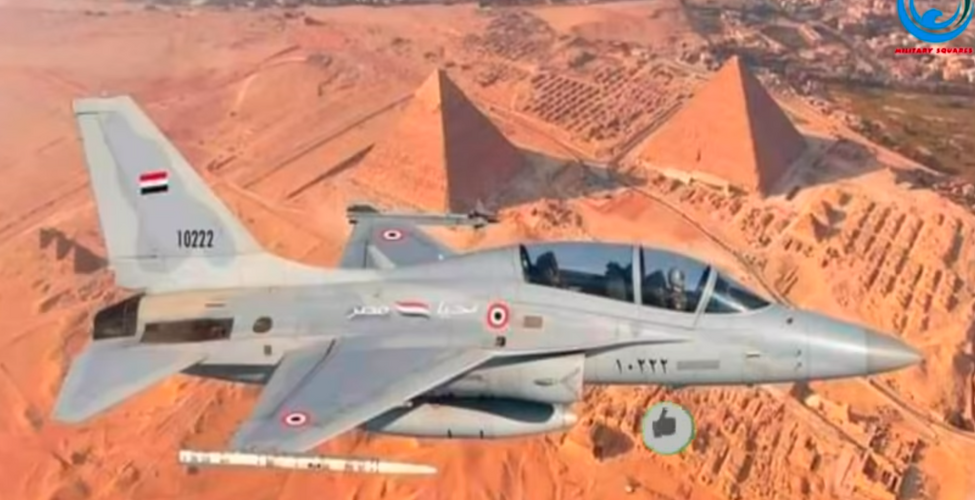You are using an out of date browser. It may not display this or other websites correctly.
You should upgrade or use an alternative browser.
You should upgrade or use an alternative browser.
KAI T-50 and FA-50 Golden Eagle Thread
- Thread starter helmutkohl
- Start date
-
- Tags
- cold war ii fa-50 kai south korea t-50
litzj
BLOG : http://jaesan-aero.blogspot.com/
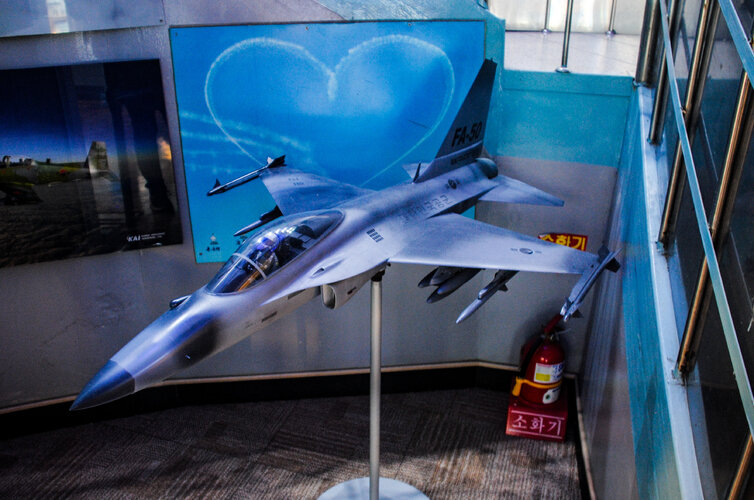
There is a static model for single-seat FA-50 proposal about 10 years ago (IDK my memory is correct)
You could see single-seat, enlarged nose, IRST, and AIM-120
https://jaesan-aero.blogspot.com/2022/12/aerospace-museum-at-sacheon-rkps.html
It is at this museum near KAI
- Joined
- 26 May 2006
- Messages
- 34,894
- Reaction score
- 15,758
Hi,

 www.facebook.com
www.facebook.com

ألف مبروووك تصنيع مصر مقاتلة كوريا الجنوبية الجولدن ايجيل التفاصيل https://youtu.be/mFA7Dg5-A9g | By قناة الساحات العسكرية Military Squares | Facebook
136 views, 29 likes, 1 loves, 3 comments, 3 shares, Facebook Watch Videos from قناة الساحات العسكرية Military Squares: ألف مبروووك تصنيع مصر مقاتلة كوريا الجنوبية الجولدن ايجيل التفاصيل...
 www.facebook.com
www.facebook.com
Attachments
To be exact, in that model(it was called the F-50 long ago, since there was a separate A-50, as I've noted before) the forward seat is removed and the rear seat compartment's turned into the primary cockpit area. By doing this they could enlarge the radar compartment as well as the radome.You could see single-seat, enlarged nose, IRST, and AIM-120
Now KAI'S considering the opposite - to remove the rear seat compartment and to add a fuel tank there.
How much the aircraft can load additional fuel in the rear seat compartment, compared to the current internal volume, 5800 lbs, from wikipedia?Now KAI'S considering the opposite - to remove the rear seat compartment and to add a fuel tank there.
- Joined
- 29 November 2010
- Messages
- 1,774
- Reaction score
- 3,477
my question is.. was this the better trade off?
1. move single seat back to get the larger radome, and assumingly a better radar with more range
2. keep single seat in current area and use the back for more fuel, gives more flight range
for me, I think 2 was the right choice
1. move single seat back to get the larger radome, and assumingly a better radar with more range
2. keep single seat in current area and use the back for more fuel, gives more flight range
for me, I think 2 was the right choice
litzj
BLOG : http://jaesan-aero.blogspot.com/
my question is.. was this the better trade off?
1. move single seat back to get the larger radome, and assumingly a better radar with more range
2. keep single seat in current area and use the back for more fuel, gives more flight range
for me, I think 2 was the right choice
Not about performance change, maybe KAI choose no OML chnage option among them
Not much. All they're doing is removing glass cockpit and the ejection seat after all. The possible fuel tank capacity was known to be around 200L/300lbs. Well the JP-8's density means 200L of JP-8 is heavier than 300lbs but I don't think the numbers are meant to be exact.How much the aircraft can load additional fuel in the rear seat compartment, compared to the current internal volume, 5800 lbs, from wikipedia?
Since the increase in fuel capacity was limited + there was a CoM problem from a new fuel tank, KAI also considered a CFT at the upper fuselage under the vertical tail, ala Eurofighter CFT style. Seems to be canned though.
"1." was a early 2000s consideration/offer to the ROKAF by KAI that stems from the KTX-II development period. It also had several iterations.my question is.. was this the better trade off?
1. move single seat back to get the larger radome, and assumingly a better radar with more range
2. keep single seat in current area and use the back for more fuel, gives more flight range
for me, I think 2 was the right choice
Once the F-50 plan gotten a bit more specific, it took a "best of both worlds" approach and moved the single-seat cockpit to the middle of where there used to be a double-seat. This way they were able to increase both the radar compartment and the fuel capacity, as shown below:
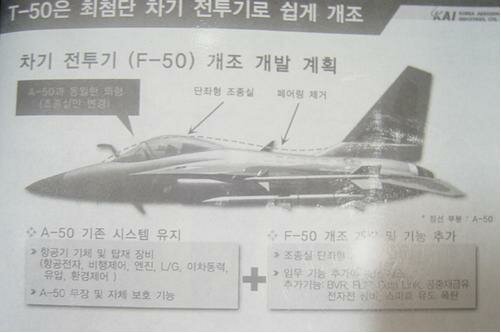
To save costs and retain maximum commonality with other aircrafts of the T-50 family, most of the avionics (mission computer), control systems (FLCS, hydraulics) and power systems (APU, engine) were supposed to be retained.
Though ROKAF hated the idea of dedicated fighter jet fleet based on T-50 since it could have undermined their future fighter procurement plan, which frankly was going nowhere at that point. It was supposed to be a medium-class fighter with it's size and weight class being somewhere in between that of Falcons and Super Hornets so the F-50 was a undershoot by a wide margin.
Also, they hated it because the development of F-50 would've costed around a billion dollars, since it included major restructuring of forward airframe, replacing one and adding one new avionics, adding refueling capability. As I've said there were several iterations of the plan, one of which also included a new engine (F414). That plan was projected to cost upwards to $2 billion.
"2." is a way newer plan, first conceived in late 2010s~early 2020s and by that reason, doesn't have much connections to the the F-50 development plan. Also, like I've said in the post above, the new fuel tank doesn't mean much since it's capacity is very limited (a bit more than half the size of a 150 gallon drop tanks). Had they entirely restructured the airframe around rear seat area they could've more effectively used the space to add a more meaningful internal fuel capacity, but their goal was to increase fuel capacity as cost effectively as possible, which meant a major airframe restructuring was a no no.
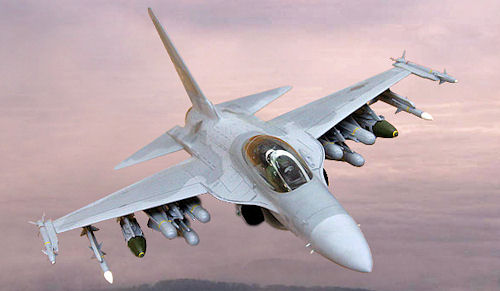
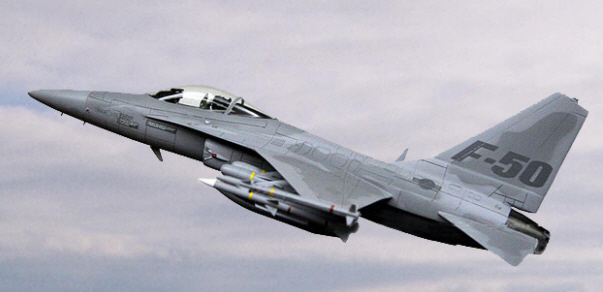
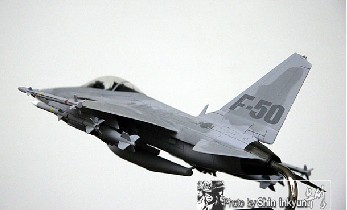
isayyo2
Lurker alert
- Joined
- 24 November 2011
- Messages
- 1,131
- Reaction score
- 2,330
Well I wasn't expecting this!
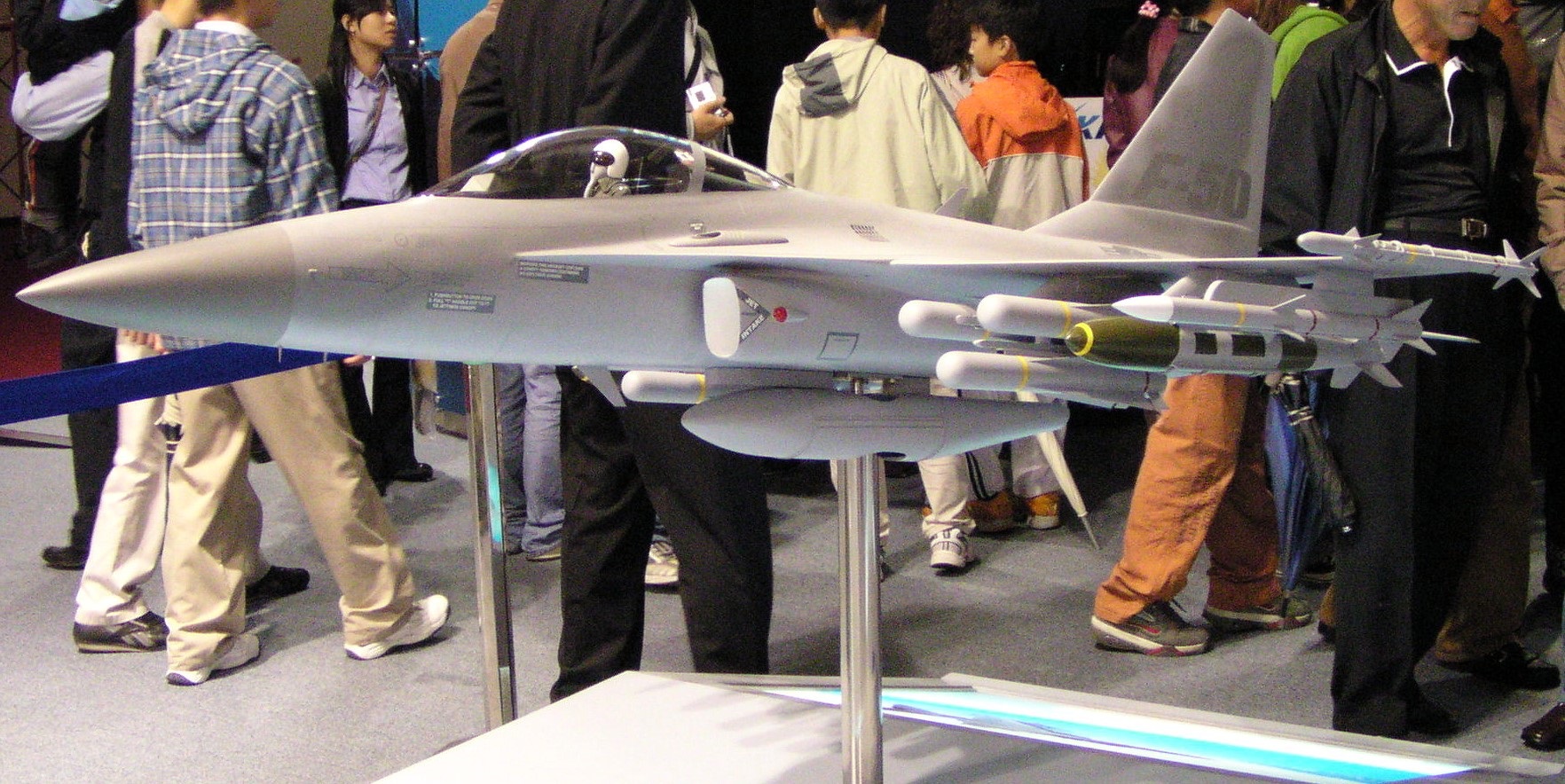
 www.aviacionline.com
www.aviacionline.com
During a ceremony at Korea Aerospace Industries (KAI) headquarters announcing the company’s development strategy through 2050, the company’s CEO discussed future developments of the FA-50, such as its F-50 single-seat light fighter version.

KAI revives the idea of the F-50, an FA-50 derivative fighter aircraft
During a ceremony at Korea Aerospace Industries (KAI) headquarters announcing the company's development strategy through 2050, the company's CEO discussed fut
- Joined
- 11 February 2010
- Messages
- 1,650
- Reaction score
- 2,701
The F-50 will directly competes with Chinese FTC-2000 and in some clients, YAK-130 and well Gripen. The F-50 tho might have advantages on having experience in US trainer requirement.
Whopper
ACCESS: Restricted
- Joined
- 6 February 2023
- Messages
- 23
- Reaction score
- 45
It depends on what you are looking for. For example there's this blog (blog.naver.com/jhst3103) of my internet friend, who's mainly focused in technicalities. He regularly visits defense technology related seminars and makes one of the most up-to-date and in-depth coverages about Korean defense programs and its technologies. Though since last year or a year before that he started to put things behind paywall ($5 a month) due to being plagiarized multiple times, even by established media outlets. His blog now only covers the content outline for what he has uploaded behind the paywall. Other than him there are also various other sources as well, such as (https://blog.naver.com/seaseadam), another internet friend of mine who mainly focuses in armored vehicles and naval weaponry. Other than him there is also (https://blog.naver.com/yanagi0221) for example, and many other blogs and Korean forums, of which I can't recall the URLs at the moment but are very in depth in what they are interested in.@Maro.Kyo
If you don't mind me asking, what blogs (or any website for that matter) do you use as sources? South Korea is looking to be a fairly large player in defense, but I can barely find any credible books or websites on S. Korean projects or the S. Korean defense industry, in general.
Other than the blogs, I usually use Korean academic libraries (well, not only for Korean military matters but for general military matters I use academic DBs like Springer, Wiley, Semantic Scholar, SPIE, IEEE, Research Gate, JSTOR, etc. They are a mountain of treasure for military and aviation enthusiasts as well) like Scienceon (https://scienceon.kisti.re.kr/main/mainForm.do), KCI (https://www.kci.go.kr/kciportal/main.kci), Korea Science (https://koreascience.kr/main.page?&lang=ko). There you could find various documents, most of the times either by the researchers of defence companies or by the professors of university faculties which collaborates with defence firms in military programmes. For instance a lot of details regarding the T-50 variants' design or technologies that went into K-2, as well as a lot of other military projects could be found in these DBs. The websites of defence companies themselves also contain a lot of interesting topics, for example you could visit Hanwha Systems' homepage if you want to know some details about their avionics products. Companies like KAI also publish magazines on regular basis which often contains interesting information as well.
When we take a step away and talk about the bureaucracy regarding these programmes, I usually look up for MoD, DAPA and Korean parliament documents, especially the National Defense Committee proceedings and MoD budget requests which are all in public domain and are readily available, similar to GAO or CRS reports and DOT&E, SAR and various other documents for US programs.
With regards to a grander military matters like national strategy and warfare researches, I search for analysis/reports from Korean think tanks, as well as research reports from service branches concerning topics of interest.
Anyways, those are my sources of information and it's quite diverse, I should say. Most of them are first hand sources but I enjoy looking up for secondary sources like those blogs I've mentioned above, as long as I am aware of their ways of research and credibility of their content.
The biggest problem for non-Korean speakers like you would obviously be that all of these sources are in Korean and rarely contain English keywords to search for. Add to that the translators out there as of now are not very reliable when you translate any Western language into East Asian language, especially when it comes to searching for military matters.
I'd say you'd at least need to wait half a century for them to actually have any secret/unbuilt projects in the first placeSo, when will we be given the chance to read: South Korean secret fighters projects - Vol I ?
isayyo2
Lurker alert
- Joined
- 24 November 2011
- Messages
- 1,131
- Reaction score
- 2,330
Good progress in Malaysia


Malaysia likely to pick KAI FA-50, HAL concedes defeat in fighter tender - Alert 5
HAL Chairman and Managing Director (CMD) CB Ananthakrishnan has acknowledged that Malaysia has not chosen his company’s Tejas fighter for its Royal Malaysian Air Force (RMAF) Light Combat Aircraft (LCA) program despite being among the two shortlisted out of eight companies that participated...
alert5.com
Was expected from the start - question will be how many they can actually afford.Good progress in Malaysia

Malaysia likely to pick KAI FA-50, HAL concedes defeat in fighter tender - Alert 5
HAL Chairman and Managing Director (CMD) CB Ananthakrishnan has acknowledged that Malaysia has not chosen his company’s Tejas fighter for its Royal Malaysian Air Force (RMAF) Light Combat Aircraft (LCA) program despite being among the two shortlisted out of eight companies that participated...alert5.com
- Joined
- 29 November 2010
- Messages
- 1,774
- Reaction score
- 3,477
good, was worried that HAL might draw this out in a legal battle.
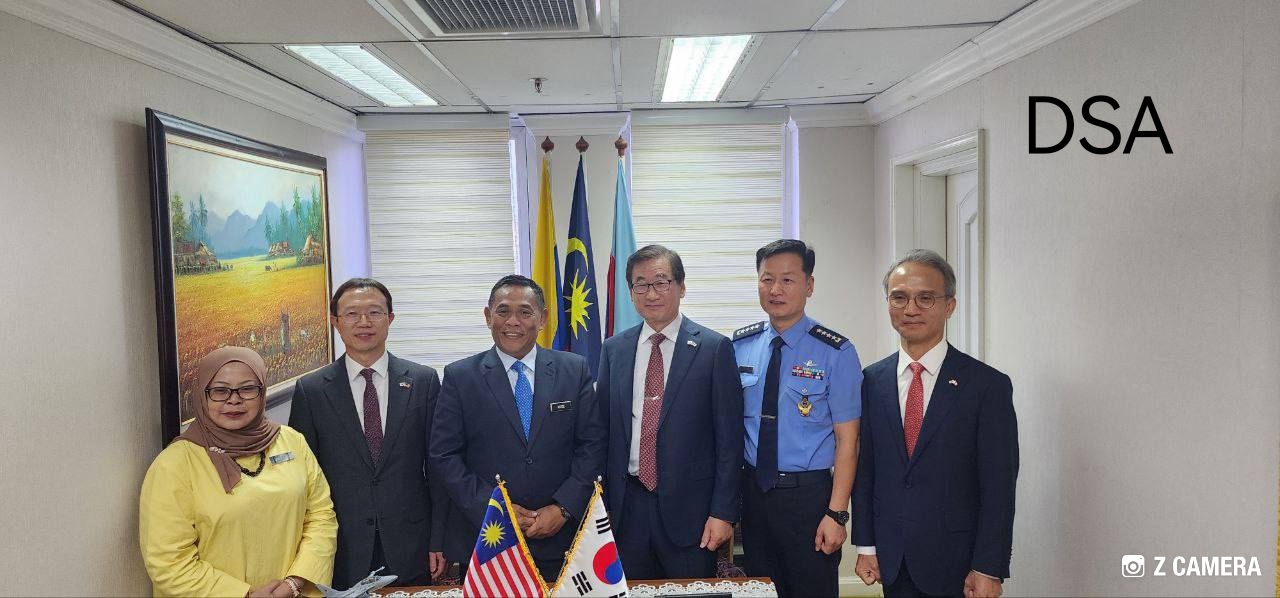
Akhirnya, Malaysia Memilih FA-50 Block 20 Keluaran Korea Aerospace Industries (KAI)
Akhirnya, pesawat pejuang ringan dan latihan lanjutan (Fighter Lead-In Trainer-Light Combat Aircraft) FA-50 Block 20 keluaran Korea Aerospace Industries (KAI) muncul sebagai pemenang dalam tender untuk membekalkan pesawat jenis itu kepada Tentera Udara Diraja Malaysia (TUDM).
 defencesecurityasia.com
defencesecurityasia.com
FA-50 officially won the tender
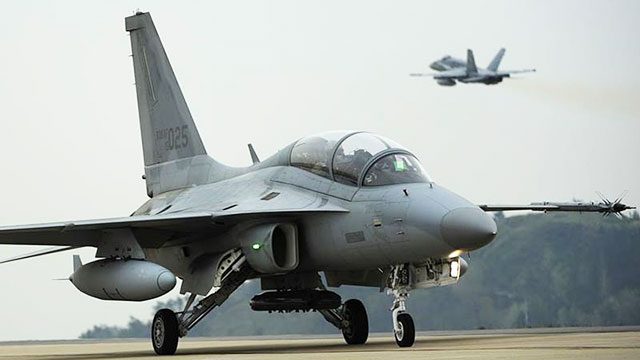
Malaysia pays 18 KAI FA-50 light combat aircraft with palm oil
$919M contract was signed between KAI and Malaysian Ministry of Defense for the supply of the 18 FA-50 light strike aircraft. Deliveries should begin in 2026.
The more I look at the Egyptian military scene from my observations it would appear that their political leadership takes the same stance as Thailand.
In return for playing nicely (ie. No coups or other silliness. ) They get access to the country's credit card within reason. And pretty much buy what ever they want.
From a logistical point of view it's a nightmare but a hundred years from now there are going to a lot of of very happy historians going through assorted Armories.
See Nepal as an example.
In return for playing nicely (ie. No coups or other silliness. ) They get access to the country's credit card within reason. And pretty much buy what ever they want.
From a logistical point of view it's a nightmare but a hundred years from now there are going to a lot of of very happy historians going through assorted Armories.
See Nepal as an example.
snne
ACCESS: Top Secret
- Joined
- 3 July 2022
- Messages
- 1,388
- Reaction score
- 4,510
idk how true it is but there are also very similar rumors regarding the Tejas as well. I mean something must clearly be going on so we can't just brush off this rumor when it comes to Egypt. If they indeed go for two very different aircraft that roughly fill the same role, it wouldn't be a nightmare anymore, it'd be a night terror. They literally bought aircraft from every player in the market already and something tells me that they might soon ring China's bell too.The more I look at the Egyptian military scene from my observations it would appear that their political leadership takes the same stance as Thailand.
In return for playing nicely (ie. No coups or other silliness. ) They get access to the country's credit card within reason. And pretty much buy what ever they want.
From a logistical point of view it's a nightmare but a hundred years from now there are going to a lot of of very happy historians going through assorted Armories.
See Nepal as an example.
I bet Sisi's watching all these aircraft clips on Youtube like an 11 yr old armchair expert and then he goes "I want this plane" and his people just get the order done; as ridiculous as that sounds I cam't find an another way to explain how the heck this keeps happening.
This just shows how generous the GCC is when it comes to Egypt's insane military buildup. They literally can't dry up the money well with all these utter nonsense purchases. The only sense it makes is that they're trying to fill the gap of modern BVR-capable aircraft but the way they're doimg it is just...bizarre...
Last edited:
TandemHEAT
ACCESS: Restricted
- Joined
- 27 March 2021
- Messages
- 28
- Reaction score
- 74
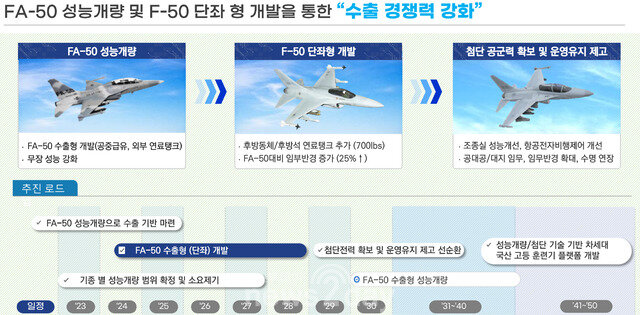
According KAI CEO/president his plan is to get the development of a single-seater F-50 variant of the FA-50 before the end of his tenure, 2025 (KAI is majority government owned and the CEO/presidents have been assigned by the administration, mostly former generals from the ROKAF). Most probably it would be funded by KAI with financial support from the government. Though, since ROKAF is not interested in expanding FA-50 capabilities, it might be the case that the funding might come from elsewhere other than the DoD. In the past 20 KF-16s were procured with Ministry of Industry and Energy budget for the sake of "aiding national aerospace industry".
- Joined
- 29 November 2010
- Messages
- 1,774
- Reaction score
- 3,477
source
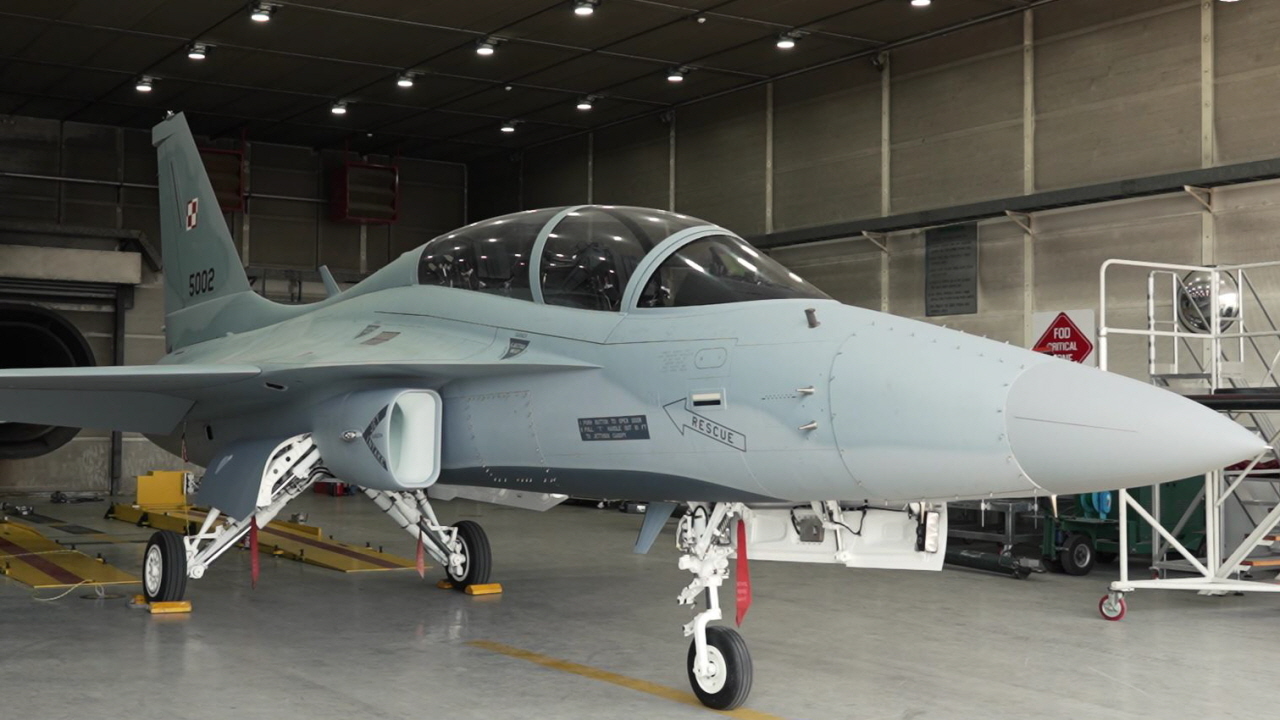 and
and
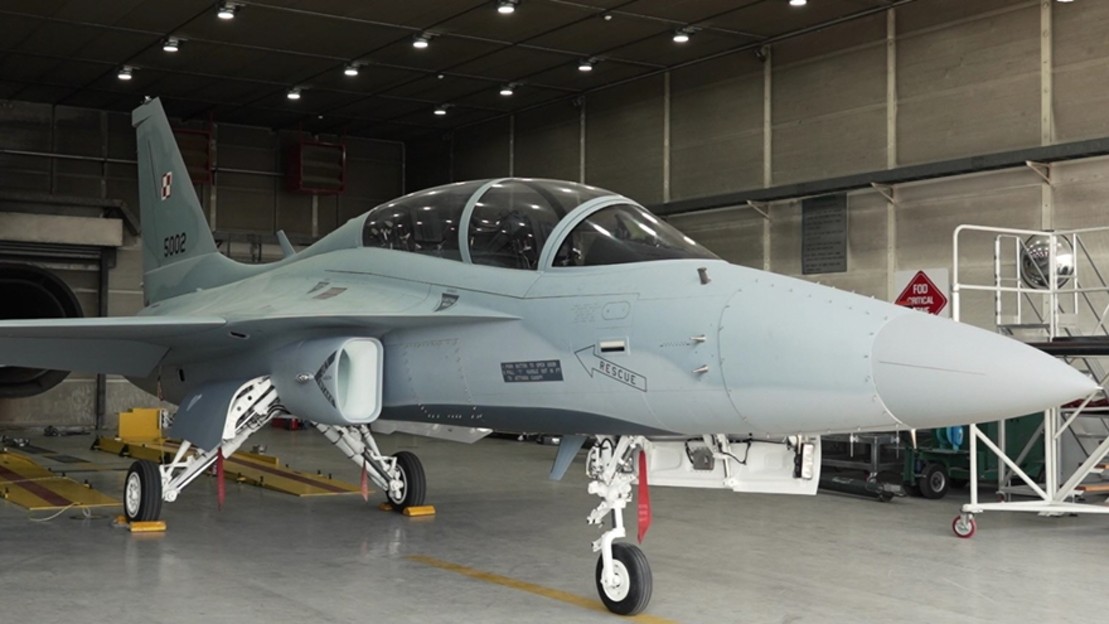
some more pics of the Polish Eagles and interviews
seems like they said it will include AESA radar and HMD


[ÇöÀåÃëÀç] Æú¶õµå 1Â÷ ¼öÃâÇü FA-50GF ÀüÅõ±â °ø°³! ±¹»ê FA-50 ¼öÃâ Àß µÇ´Â ÀÌÀ¯?
µ¿¿µ»ó ¸µÅ© : https://tv.naver.com/v/34370062Áö³ 3¿ù 8ÀÏ ±¹¹æ±â¼úÇ°Áú¿øÀÇ Æú¶õµå 1Â÷ ¼öÃâ FA-50GF(Gap......
bemil.chosun.com

some more pics of the Polish Eagles and interviews
seems like they said it will include AESA radar and HMD
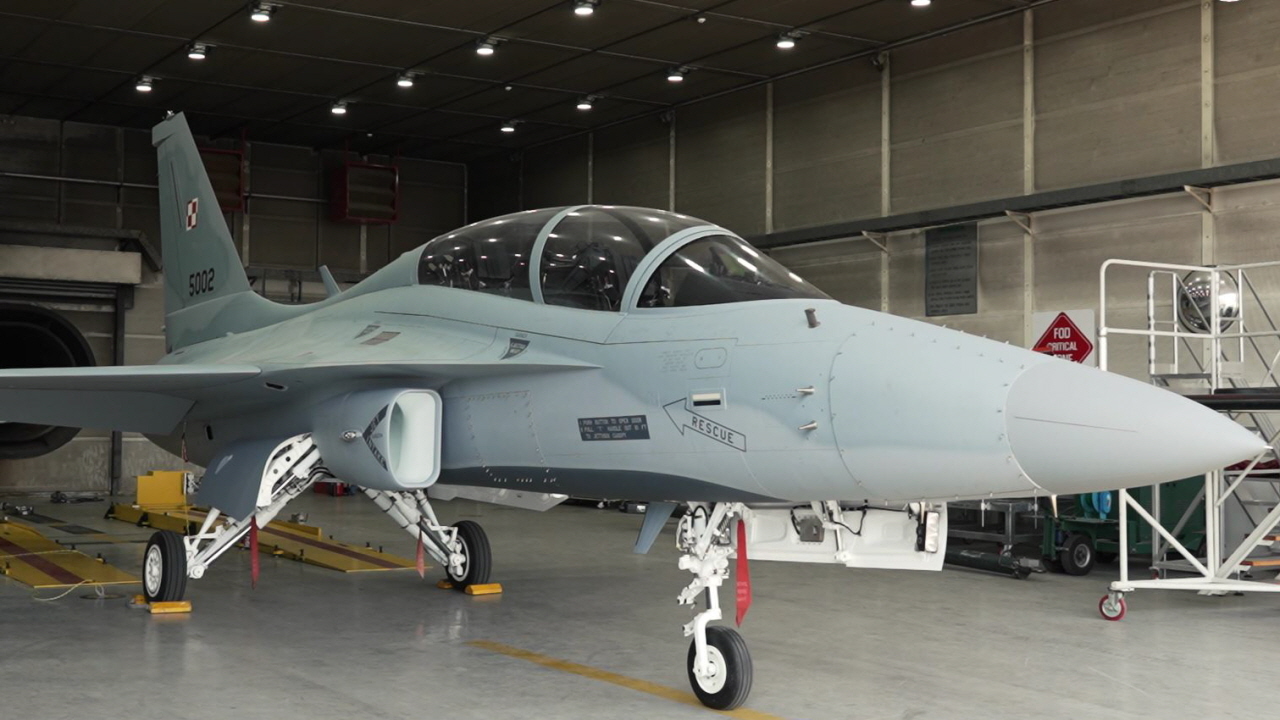
aonestudio
I really should change my personal text
- Joined
- 11 March 2018
- Messages
- 2,964
- Reaction score
- 7,493
- Joined
- 29 November 2010
- Messages
- 1,774
- Reaction score
- 3,477
interesting! looks like a gun hole from far away.
can existing Golden Eagles be retrofitted with this probe?
can existing Golden Eagles be retrofitted with this probe?
Whopper
ACCESS: Restricted
- Joined
- 6 February 2023
- Messages
- 23
- Reaction score
- 45
LIG Nex1, KAI Unveil AESA Radar For FA-50 | Aviation Week Network
A prototype of the ESR-500A AESA radar intended to replace the the FA-50 light fighter’s EL/M-2032 radar has been revealed by LIG Nex1 and KAI.
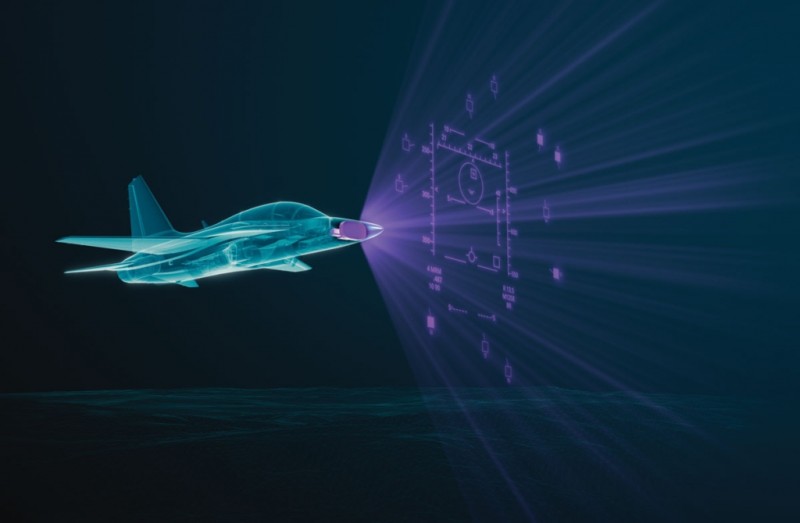
'국산 초음속' 경공격기…레이더 '미국산'으로 '업글', 왜
국산 FA-50 초음속 경공격기의 레이더로 미국 레이시온 테크놀로지스의 차세대 AESA(능동위상배열) 레이더 팬텀스트라이크가 탑재된다. 16일 방산업계와 미국 정부에 따르면 한국항공우주산업(KAI)이 개발한 FA-5
Raytheon's PhantomStrike AESA radar was approved for DCS by US Gov. DSCA
FA-50PL is highly likely to utilize it
- Joined
- 24 November 2008
- Messages
- 1,549
- Reaction score
- 2,612
- Joined
- 11 February 2010
- Messages
- 1,650
- Reaction score
- 2,701
The GaN is probably used for making the module smaller instead of power. Thus maximizing the amount of TRM that can be fitted to the antenna.
From available materials, seems the radar is also destined as an F-5 upgrade option. Thus the size is probably similar as AN/APG-67. The architecture could be tile to maximize the space for TRM. Air cooling indicates cooling capacity requirement of some 2-3 KW.
From available materials, seems the radar is also destined as an F-5 upgrade option. Thus the size is probably similar as AN/APG-67. The architecture could be tile to maximize the space for TRM. Air cooling indicates cooling capacity requirement of some 2-3 KW.
snne
ACCESS: Top Secret
- Joined
- 3 July 2022
- Messages
- 1,388
- Reaction score
- 4,510
Who would keep upgrading F-5s in this day and age besides Iran though? And correct me if I am wrong but It must be super efficient if it only requires 2-3 KWs.The GaN is probably used for making the module smaller instead of power. Thus maximizing the amount of TRM that can be fitted to the antenna.
From available materials, seems the radar is also destined as an F-5 upgrade option. Thus the size is probably similar as AN/APG-67. The architecture could be tile to maximize the space for TRM. Air cooling indicates cooling capacity requirement of some 2-3 KW.
- Joined
- 11 February 2010
- Messages
- 1,650
- Reaction score
- 2,701
Who would keep upgrading F-5s in this day and age besides Iran though? And correct me if I am wrong but It must be super efficient if it only requires 2-3 KWs.
Well maybe and the other use case would be UAV's.
And the cooling capacity tho is only indicates how much heat one can remove from the set. the AESA TRM itself tho typically have about 35% PAE (Power Added Efficiency). Assuming the same size and frequency as APG-67 and the GaN architecture allows 95% of the aperture to be filled, the radar would have 811 TRM. The cooling capacity will limit the average emitted power which in this case 669 Watt.
- Joined
- 29 November 2010
- Messages
- 1,774
- Reaction score
- 3,477
so Phantomstrike is competing with a domestic Korean radar for the AESA upgrade? or are they the same?
so Phantomstrike is competing with a domestic Korean radar for the AESA upgrade? or are they the same?
PhantomStrike radar is mainly for export versions such as FA-50PL and FA-50M, as there's not enough time for the Korean radar to be integrated to them
- Joined
- 11 February 2010
- Messages
- 1,650
- Reaction score
- 2,701
so Phantomstrike is competing with a domestic Korean radar for the AESA upgrade? or are they the same?
I would say if my assumption about Phantomstrike wants to maximize the amount of TRM through use of GaN is true. It will have advantage over the Korean ESR-500A radar.
Phantom strike will have roughly 44% range advantage over ESR-500 assuming same rating TRM's. If US module can have lower noise figure then the advantage will grow.
In case of Poland, yes. In case of Malaysia we'll see.so Phantomstrike is competing with a domestic Korean radar for the AESA upgrade? or are they the same?
PhantomStrike radar is mainly for export versions such as FA-50PL and FA-50M, as there's not enough time for the Korean radar to be integrated to them
How are you able to come up with such a specific figure when there are so little details known to public regarding those radars? Both uses GaN, both are limited by cooling capacity of what is already there in FA-50's nose, we know that Phantom Strike on FA-50 weighs 45kg wheras ESR-500A has 500 TRM and that's just about it. "44%" sounds like something you've got from a RNG.so Phantomstrike is competing with a domestic Korean radar for the AESA upgrade? or are they the same?
I would say if my assumption about Phantomstrike wants to maximize the amount of TRM through use of GaN is true. It will have advantage over the Korean ESR-500A radar.
Phantom strike will have roughly 44% range advantage over ESR-500 assuming same rating TRM's. If US module can have lower noise figure then the advantage will grow.
Last edited:
Similar threads
-
-
What if Sweden/Saab went for a different set of design criteria for the Gripen
- Started by helmutkohl
- Replies: 31
-
-
-
South African missiles/rockets/PGM's - Prototypes, Projects, Concepts, etc.
- Started by Graugrun
- Replies: 429

